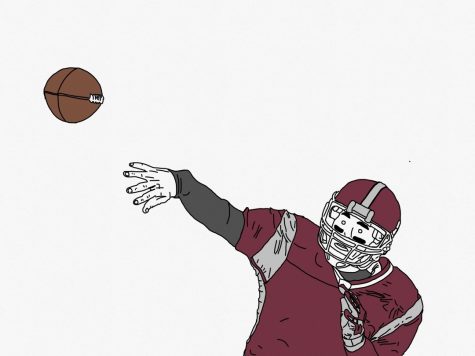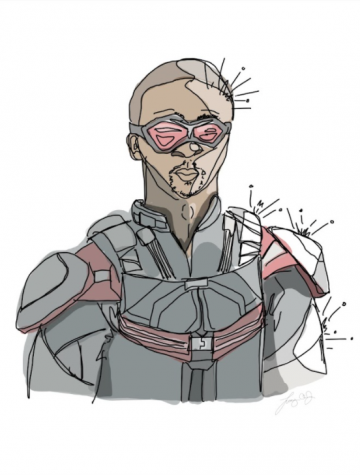“Cuties”: the not-so-cute reality
Many movies explore the dark and uncomfortable ideas ever present in society in order to leave their mark on the viewer and even the world, and on the surface the movie “Cuties” seemed no different. After starting with a theme that almost anyone can relate to—a young girl who feels trapped by her religious family and wants to find her own individuality— “Cuties” takes an unexpected turn into exemplifying the very social attitudes that the director intended to critique. The main character, a young girl named Coumba, lives in Paris and rebels from her conservative culture joining a dance team and searching for an identity that is the opposite of everything she has ever known. While the premise seems pretty mundane, the intense chorus of criticism that the film attracted upon being released in the U.S is evidence that there is more to “Cuties” than its hallmark appearance.
Prominent movie critic Monica Castillo from RogerEbert.com characterizes the fundamental problem of the movie in a recent review. “Controversy aside, “Cuties” is a difficult and challenging film, pushing the idea of ‘depiction does not equal endorsement’ to its limit,” Castillo said.
This echoes the storm of critiques that came after the movie’s American release, accusing the film of glorifying the hyper-sexualization of young girls: the very thing the film maker was trying to critique. And there is truth to this sentiment, as “Cuties” contains lengthy scenes of close up shots where twelve-year-old girls are emulating the hyper-sexualized dance moves of adult women.
This technique, the raw exposure of society’s dark side, is nothing new within the film industry. If this philosophy rings an all-too-familiar bell, it may be because this problem was brought up in recent years with the release of “13 Reasons Why,” where an extremely graphic scene depicts a teenage girl committing suicide. Not to mention, the entriety of the show revolving around the effects of said suicide. Creators of the Netflix original series defended it by emphasizing the importance of showing the raw, unfiltered version of suicide rather than attempting to hide its especially ugly sides. While some found this unfiltered take refreshing, many found it to glorify suicide. The scene was later cut out of the series in July of 2019, but the show still faces much criticism for its overall message.
“Cuties” is now walking the same fine line between glorification and raw representation as “13 Reasons Why” did previously. While many believe the film hyper-sexualizes young girls, the director, Maimiuna Doucouré, defends her film as it is based on her own real-life past trauma. She explains the film was meant to expose the harsh realities of sexualization from a young age rather than just to portray children in a sexual manner.
“We, as adults, have not given children the tools to grow up healthy in our society,” Doucouré said. “I wanted to open people’s eyes to what’s truly happening in schools and on social media, forcing them to confront images of young girls made up, dressed up and dancing suggestively to imitate their favorite pop icon. I wanted adults to spend 96 minutes seeing the world through the eyes of an 11-year-old girl, as she lives 24 hours a day. These scenes can be hard to watch but are no less true as a result.”
From Arkansas senators to California soccer moms, adults across America have shared their negative opinions on “Cuties”. However, they may all be missing the key perspective that all high school students have: we grew up with the very same social media pressures the film is trying to address. Senator Tom Cotton never tried to pose like his favorite Instagram influencer or go TikTok viral for his version of the WAP dance, so maybe before commenting on the film he should talk to the high school students who have. He could ask a simple question: did Doucouré open people’s eyes to what’s really happening in schools, or did the uncomfortably long scenes of young girls dancing sexually only add to the problem of hyper-sexualization in society today?
Hello there! Our goal is to provide relavent, engaging journalism for readers of all ages. Your donation will support the student journalists of the Wolfpacket at Claremont High School, and will allow us to purchase equipment, print our monthly issues, and enter in journalism competitions. We appreciate your consideration!

Meghan Mason is a senior at CHS, and this is her third year on the Wolfpacket staff. Mason is the Assistant Editor-in-Chief this year, and cannot believe...

The 2020-2021 school year marks Ady Bolinger’s second year on the Wolfpacket staff. Bolinger, a junior at Claremont High School, holds an editorial position...






